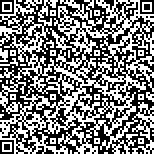下载中心
优秀审稿专家
优秀论文
相关链接
摘要

支持向量数据描述SVDD(Support Vector Data Description)在单目标土地覆盖信息提取中得到了初步的应用,但已有研究一般选择纯净像元作为分类样本,不符合SVDD分类器原理,难以保证精度。本文选择北京市通州区为实验区,基于QuickBird重采样图像和地表真值数据构建不同空间特征的训练样本集,设计两种分类样本选择方案:在训练样本集中随机选择分类样本以及手工选择分类样本,进行SVDD分类。实验结果表明,随着惩罚因子C值逐渐增大或核宽度s值逐渐减小,超球会逐渐减小,生产者精度逐渐降低而用户精度逐渐提高。在最优分类参数的前提下,对样本进行SVDD分类。在模拟实验中,随着样本从中心向边缘逐渐扩散,超球也逐渐增大,分类精度逐渐增高,而最外层的样本接近小麦真实分布的边界,超球内混入其他的地物像元;在真实实验中,中心样本集SVDD分类总精度和生产者精度分别为80.48%和45.15%,而边缘样本集SVDD分类总精度和生产者精度分别为92.71%和95.81%,得到了明显的提升(Z=156.12),表明利用边缘像元进行SVDD分类能够提高目标地物的识别精度。
The Support Vector Data Description (SVDD) method has been recently applied to specific land-cover classifications. However, previous studies acquired pure pixels to construct the training set, which does not conform to the SVDD principle. In the present research, the study area was located in Tongzhou, Beijing. We first constructed several training sets with different spectral responses based on QuickBird image and ground truth data derived through visual interpretation. Then, two sampling schemes were adopted, selecting training samples in a given training sets and manual interpretation. Results showed that when the penalty parameter C increased or the kernel width s decreased, the volume of a hypersphere declined, thus resulting in lower producer accuracy and higher user accuracy. Based on the optimal parameters, the SVDD classifications were conducted using training samples. In the simulated experiments, when training data moved from the center to the margin of wheat distribution, the volume of a hypersphere increased, thus classification accuracy was improved. By contrast, as the outermost samples approach the boundary of wheat spectral distribution, a hyper sphere fitted by these cases can easily accept pixels of other classes. In the actual experiment, center training samples acquired according to previous literature yielded poor classification, with accuracies of 80.45% and 45.15%, from the overall and the producer perspective, respectively. However, classification using marginal training samples was more accurate, with 92.71% overall accuracy and 95.81% producer accuracy. The results demonstrated that using marginal training data could efficiently improve classification accuracy of the target class.

